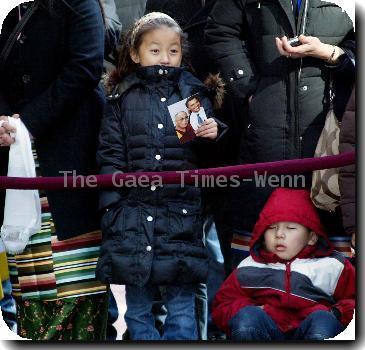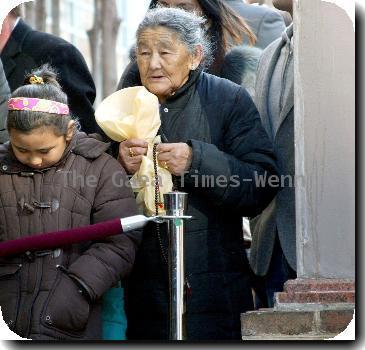Architecture, culture, shopping and food: Plenty of fun and even some wow at Shanghai Expo
By Beth J. Harpaz, APMonday, May 10, 2010
Finding the wow amid the kitsch at Shanghai Expo
SHANGHAI — Crowds at the 2010 World Expo in Shanghai have subsided, which is good news for travelers planning a visit during its six-month run. But even without the long lines that plagued its May 1 opening and the days that followed, visitors may have a hard time finding the “wow” amid hundreds of ho-hum touch screen displays, promotional videos and gift shops filled with T-shirts and coffee mugs.
And yet, there is plenty of wow to be found. I spent four days at the Expo’s opening week, and while I did not encounter anything as revolutionary as the air conditioning and television that greeted visitors to the 1939 World’s Fair in New York, I was impressed and inspired by the architecture and some (though not all) of the exhibits. Here are a few of the best things to see and do at this 21st-century world’s fair, where nearly 200 countries and dozens of corporations have erected pavilions and exhibits with a theme of “Better City, Better Life.”
ARCHITECTURE: The Shanghai Expo’s greatest triumph is its architecture. Many countries came up with creative, whimsical and downright beautiful buildings. Britain is a cathedral of 60,000 slender seed-bearing rods, like a dandelion about to burst. Japan is a lavender spouted semicircle, resembling a character out of Pokemon. China is a towering red inverted pyramid, based on a traditional structure called a dougong. Brazil is a box of Amazon-green lace, India is a majestic dome, and the United Arab Emirates is a golden, undulating sand dune. Egypt is a striking swirl of black and white, Israel is a blue-glass seashell, and Romania is a shiny green apple. South Korea uses its alphabet to create a colorful pattern, Spain is a basket of 8,000 delicate woven mats, and Russia is decorated with white, red and gold floral designs.
NIGHT VIEWS: Expo grounds are open 9 a.m.-midnight, with pavilions open until 10:30 p.m. The buildings come alive after dark as their colors light up, shimmer and change.
ART AND CULTURE: Tip your beret to the French, who brought to China works of art by Van Gogh, Gauguin, Cezanne, Bonnard, Millet, Manet and Rodin. Also in France’s pavilion: Miniature formal gardens and a holographic model strutting high fashion down a computer-generated catwalk. For Denmark’s pavilion, Copenhagen has loaned one of its greatest treasures: “The Little Mermaid” statue. The Spanish pavilion opens with a live, sexy, flamenco-esque dancer, and ends with a freaky, gigantic, blue-eyed baby mannequin. Russia is decorated with enormous, colorful morning glories, and Australia has acrobats dressed like divers, swimming across its ceiling.
Expo also hosts exceptionally fine outdoor performances that change each day. Among those offered the first week were dance troupes from Turkmenistan, Mexico and Vanuatu.
PURE FUN: The Swedish pavilion is like a playground: Zoom down a slide from the first level to the floor below, then climb on a swing and swoop to the ceiling. The Swiss pavilion has a cable car on its roof, and the Canadian pavilion, whose interior was designed by Cirque du Soleil, offers stationary bikes with computer-generated scenery that changes as you pedal. A company touting earthquake-proof wood construction offers visitors an “earthquake” experience in a trailer that will shake you silly.
SHOPPING: Many pavilion shops sell predictable kitsch — wooden shoes from Holland (your choice: key chains or chocolate), Russian nesting dolls, and soccer balls from Brazil stamped with Pele’s signature. Australia sells Ugg-like sheepskin boots from the Yellow Earth company in a patterned style, which fans of the solid-color boots may want to check out. And ubiquitous official Expo stores sell the usual T-shirts, bags and hats, with a few oddball objects, like a potted plant speaker with a tiny cactus growing out of it, blaring Beyonce’s “Single Ladies.” You can also buy the Expo mascot, Haibo, who looks like Gumby, wearing various ethnic accessories — hula skirt, sombrero or turban, to name a few.
But some of the most interesting souvenirs are in the Africa pavilion, where vendors are set up by country in a friendly marketplace to sell coffee, jewelry and unique crafts and merchandise. You can take home a drum, a desert stone known as a sand rose, or a wooden dish carved to resemble a pool, with a zebra or giraffe drinking out of it. Dana Miller and Trece O’Donnell, tourists from Denver who were shopping at the pavilion, joked that they “came all the way to China to buy necklaces from Africa.”
FOOD: There’s KFC if you’re homesick for American fast food, but wouldn’t you rather try Argentine beef, a fish sandwich from the Swedes or Belgian frites, washed down with a Moosehead lager from Canada? Skip the Belgian waffles, though; they’re small pre-sweetened wafers wrapped in a napkin, not the extravagant whipped cream-and-strawberries confection you might expect. If you’re in a hurry, head to the Colombian coffee cafe. Even on a busy day elsewhere at Expo, in a country of tea-drinkers, there was no line here.
MOVIES AND THE USA PAVILION: You get sick of movies real fast at Expo, where it seems like every other country offers a sappy video about a child with a dream. The 360-degree projections, 4D special effects like snowflakes and mist, and 3D glasses seem to delight the Chinese visitors (many of whom may not have experienced this technology before), but it’s old hat to Americans who’ve seen this stuff at theme parks for years.
Visitors to the USA pavilion must sit through not one, not two, but three movies, with little else to see or do, other than gazing at a wall of names of the corporate sponsors who paid for the pavilion. (The building itself is boring, a gray steel structure that’s supposed to resemble an eagle.)
The good news is, the movies in the USA pavilion are a load of fun. The souvenirs in the USA gift shop (ironically but not surprisingly) are mostly made in China, but if there’s one product Americans still corner the market on, it’s entertainment. The first of the three films shows Americans trying to offer greetings in Chinese, and their mangled attempts to get the pronunciation right is hilarious, both to Chinese and English speakers. The second film opens with a message from Secretary of State Hillary Clinton and closes with a message from President Obama; in between kids offer ideas for the future (like cars that run on fruit juice and houses made from cookies).
The final film, which artfully unfolds without a single word being uttered, tells the story of a young girl who dreams of turning a garbage-filled lot into a garden. Gradually she persuades and inspires her neighbors — of all ages, from every ethnic group — to help. The garden is destroyed by a storm, but with creativity, hard work and generosity, they rebuild it. Sounds hoaky, but many visitors find it remarkably soul-stirring.
Jim Klever-Weis, visiting the Expo from Los Angeles with his partner, Kris Klever-Weis, said he was pleased with the way the film celebrated American values. “All the different faces showed that we really are a diverse country, and people really do care about their communities,” he said.
Tags: Asia, Beauty And Fashion, China, East Asia, Eastern Europe, Europe, Events, Expo 2010 Shanghai China, Fashion, Greater China, Hillary Clinton, Middle East, North America, Russia, Shanghai, United States

